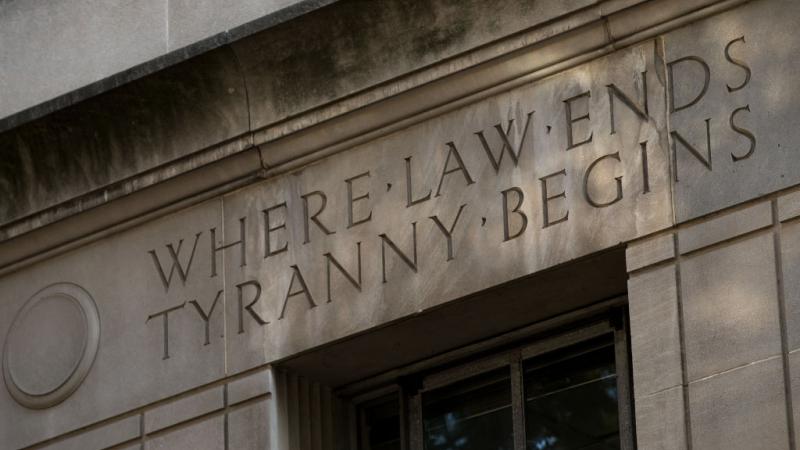New watchdog report raises fresh concerns about nuclear weapons security, reliability
This marks the second time the Department of Energy's Office of Inspector General has found problems with ensuring parts were "actually fit for use in nuclear weapons."
A new Energy Department watchdog report is raising fresh concerns about America's nuclear weapons security and reliability, a topic Congress has long lamented.
The DOE inspector general reported this month that the government nuclear security site in Kansas City accepted weapons parts that failed "continuity testing," while another site approved a design change for a part that could leave it "susceptible to contaminants or cleaning fluids that over time could negatively impact" its functionality.
The report looked into allegations against the Kansas City National Security Campus (KCNSC), which manufactures and procures non-nuclear parts, and the much better known Sandia National Laboratories, the "design agency" for one of the parts. They are two of eight sites that comprise the National Nuclear Security Administration (NNSA).
Brought to the OIG's attention in September 2019, the alleged "non-compliance with nuclear weapon product designs" could have harmed "the safety and reliability of the nuclear stockpile," the OIG said in a press release. It conducted inspections at both sites from January through July last year.
The 21-year-old NNSA, established by Congress, is tasked with protecting the nuclear stockpile through the application of engineering and manufacturing standards. It has long been flagged for problems ranging from management organization to safety compliance that has worried lawmakers in Washington.
For example, just last December, the OIG warned that NNSA and the Pentagon had feuded so long over the Aircraft Monitor and Control (AMAC) systems for nuclear-armed aircraft that they put safety in jeopardy. "These disagreements resulted in NNSA and the Air Force engaging in prolonged exchanges that delayed aircraft tests needed to establish or reaffirm compatibility, weapon reliability, and nuclear safety," the watchdog warned in its inspection report.
And the inspector general has flagged concerns since 2014 about whether nuclear parts are "actually fit for use in nuclear weapons."
The audit seven years ago found that NNSA sites sometimes relied on "undocumented expert engineering opinions" to justify the use of "nonconforming parts," rather than formally documenting "technical justifications." They had also lapsed on "quality inspections" of parts supplied by vendors, letting in components with "unacceptable deviations."
One site blames the other for poor communication
The best the report could say about the two NNSA sites is that the OIG couldn't confirm the allegation that KCNSC failed to consult with Sandia on manufacturing methods.
Due to "outdated testing requirements" used by Gardien, a subcontractor, KCNSC wrongly accepted 20 "flex cables" that should have been recorded as failing to meet the "maximum resistance" requirements.
Though Sandia approved the tweaked design for a "rigid-flex cable" that used "copper foil construction" instead of the original "copper clad," it blamed KCNSC for failing to communicate this change to the original design.
According to five purchase orders, contractor Printed Circuits Inc. fabricated "one-sided laminate" using a material that includes copper foil. This produces a "less uniform, more irregular surface" than the design called for, making it weaker in the long run, the part designer told the OIG.
"A production deviation from the design's specifications may require coordination with the design agency and potential re-approval" on the release plan, but because Sandia approved the plan, "KCNSC believed that the part met the design's specifications," the report said.
Presented with the results of OIG's investigation and its recommendations in April, Sandia officials said they never would have approved the release plan if KCNSC had specifically mentioned the switch to copper foil.
The report laid blame on both sites. "While a more thorough review" of the documentation could have revealed the foil, "a clear communication from the production agency at the time of the change ... may have also prevented the production of several lots" of the part, the report concluded.
Sandia later approved the new design anyway, under an "exception release" process that found the foil "would perform the same" as the clad construction, the report said. The NNSA completed a "root-cause analysis" to prevent similar issues from coming up in other product lines.
KCNSC took "immediate action" following recommendations by the OIG in June, either disposing of the flex cables or verifying their acceptability through the exception release process.
The OIG made no further recommendations because the nuclear security agency took swift action following its memos last spring.















